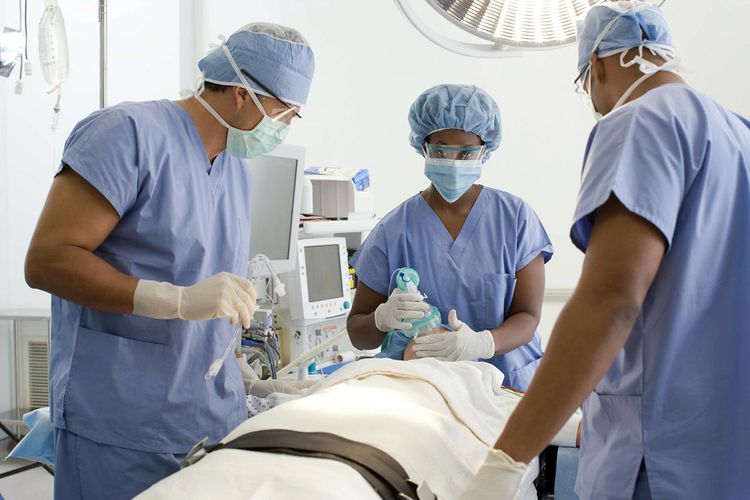Breast Cancer in Men: Symptoms, Causes & Treatment
What are the symptoms of breast cancer in men?
Breast cancer in men is rare, but it can occur. The symptoms of breast cancer in men are similar to those in women and may include:
- A lump or swelling in the breast or chest area
- Nipple discharge, which may be bloody or clear
- Changes in the nipple, such as inversion (turning inward)
- Changes in the skin of the breast or nipple, such as redness, scaling, or dimpling
- Pain or discomfort in the breast or nipple area
- Enlarged lymph nodes under the arm or around the collarbone
It’s important to note that most breast lumps or changes in men are not due to breast cancer but may be caused by other conditions such as gynecomastia (enlarged breast tissue in men), cysts, or infections. However, any persistent or unusual changes in the breast or chest area should be evaluated by a healthcare provider, especially if the symptoms do not resolve or if they are associated with other concerning signs.
Men with a family history of breast cancer or a known genetic predisposition to the disease, such as a BRCA gene mutation, may have an increased risk of developing breast cancer and should be vigilant about monitoring their breast health and discussing their risk with a healthcare provider. Early detection and prompt medical evaluation are key to improving outcomes for men with breast cancer.
What are the causes of breast cancer in men?
The exact causes of breast cancer in men are not fully understood, but several factors may contribute to the development of the disease. These include:
- Genetic mutations: Inherited genetic mutations, such as mutations in the BRCA1 and BRCA2 genes, can increase the risk of developing breast cancer in both men and women. Men with a family history of breast cancer or a known genetic predisposition may have an increased risk of developing the disease.
- Hormonal factors: Hormonal imbalances, such as high levels of estrogen or low levels of testosterone, may play a role in the development of breast cancer in men. Conditions that affect hormone levels, such as obesity, liver disease, or certain medications, may also increase the risk.
- Radiation exposure: Previous exposure to radiation, such as radiation therapy for other types of cancer, may increase the risk of developing breast cancer in men.
- Increased estrogen levels: Some medical conditions, such as Klinefelter syndrome or liver disease, can lead to increased estrogen levels in men, which may be a risk factor for breast cancer.
- Age: Like in women, the risk of breast cancer in men increases with age, with most cases being diagnosed in men over the age of 60.
- Family history: Men with a family history of breast cancer, especially in close relatives such as a mother, sister, or daughter, may have an increased risk of developing the disease.
It’s important to note that while these factors may increase the risk of breast cancer in men, the majority of cases occur sporadically without a clear genetic or environmental cause. Regular breast self-exams and awareness of potential symptoms are important for early detection and prompt medical attention if any changes are noticed. Men with concerns about their risk of developing breast cancer should speak with a healthcare provider or genetic counselor to discuss their individual risk factors and appropriate screening measures.
What is the treatment for breast cancer in men?
The treatment for breast cancer in men is similar to that for women and may include a combination of surgery, radiation therapy, chemotherapy, hormone therapy, targeted therapy, and/or immunotherapy. The specific treatment plan will depend on various factors including the stage of the cancer, the size and location of the tumor, the type of breast cancer, the presence of hormone receptors or genetic mutations, and the overall health and preferences of the individual.
- Surgery: The main treatment for breast cancer in men is surgery to remove the tumor. This may involve a lumpectomy (removal of the tumor and a small amount of surrounding tissue) or a mastectomy (removal of the entire breast). In some cases, lymph nodes in the underarm area may also be removed to check for spread of the cancer.
- Radiation therapy: Radiation therapy may be used after surgery to target and kill any remaining cancer cells in the breast or surrounding tissues. It may also be used before surgery to shrink the tumor or as a palliative treatment to relieve symptoms in advanced cases.
- Chemotherapy: Chemotherapy is often recommended for men with aggressive or advanced breast cancer to destroy cancer cells throughout the body. Chemotherapy may be given before surgery to shrink the tumor, after surgery to reduce the risk of recurrence, or as a primary treatment for advanced or metastatic disease.
- Hormone therapy: Hormone therapy, such as tamoxifen or aromatase inhibitors, may be used to block the effects of estrogen on hormone receptor-positive breast cancer in men. This treatment is most often used in men with hormone receptor-positive disease.
- Targeted therapy: Targeted therapy drugs, such as trastuzumab (Herceptin), may be used for men with HER2-positive breast cancer to specifically target and inhibit the growth of cancer cells that overexpress the HER2 protein.
- Immunotherapy: Immunotherapy drugs may be used in certain cases to help the immune system recognize and attack cancer cells.
Treatment for breast cancer in men is individualized based on the specific characteristics of the cancer and the patient’s overall health. It’s important for men with breast cancer to work closely with a multidisciplinary team of healthcare providers, including medical oncologists, surgeons, radiation oncologists, and other specialists, to develop a personalized treatment plan that maximizes the chances of a successful outcome. Regular follow-up care and monitoring are also important to detect and manage any potential recurrence or side effects of treatment.




